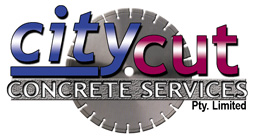The Role of Core Drilling Sydney in HVAC System Installation
Core drilling Sydney is an integral technique in construction and renovation, particularly in the installation of HVAC (Heating, Ventilation, and Air Conditioning) systems.
This precise method of creating circular holes in concrete and other rigid materials allows for the efficient and effective placement of HVAC components.
Understanding Core Drilling
Core drilling involves using a cylindrical drill bit, often diamond-tipped, to cut through materials such as concrete, brick, or stone. This method creates clean, precise holes with minimal disruption to the surrounding structure. The extracted core can also be analysed for structural integrity and composition, providing valuable insights during the construction process.
Applications of Core Drilling in HVAC Systems
- Creating Duct and Vent Openings
One of the primary uses of core drilling in HVAC installations is creating openings for ducts and vents. HVAC systems require various ducts to distribute air throughout a building, and these ducts often need to pass through walls, floors, and ceilings. Core drilling ensures these openings are accurately positioned and perfectly sized, facilitating smooth installation and optimal airflow.
- Penetrating Concrete Slabs and Walls
In many commercial and residential buildings, HVAC systems need to penetrate thick concrete slabs and walls. Core drilling allows for precise penetration without causing extensive damage to the structure. This precision is essential in maintaining the building’s integrity and ensuring the HVAC system operates efficiently.
- Installing Exhaust Systems
Proper ventilation is critical in HVAC systems, particularly for removing stale air and introducing fresh air into the building. Core drilling is used to create holes for exhaust fans and ventilation pipes, ensuring they are correctly positioned to maximise efficiency. This helps maintain indoor air quality and enhances the overall comfort of the building’s occupants.
- Setting Up Control Systems and Sensors
Modern HVAC systems often include sophisticated control systems and sensors to regulate temperature, humidity, and air quality. These components need to be strategically placed for optimal performance. Core drilling enables the precise installation of control panels and sensor housings, ensuring they are securely mounted and correctly aligned.
- Routing Refrigerant Lines
Route refrigerant lines through various parts of the building are essential in HVAC systems that use refrigerants, such as air conditioners and heat pumps. Core drilling provides a clean and efficient method for creating passages for these lines, minimising the risk of damage and ensuring a neat, professional installation.
Benefits of Core Drilling for HVAC Systems
Precision and Accuracy
Core drilling allows for highly accurate hole placement, which is crucial in HVAC installations. Accurate openings ensure that ducts, vents, and other components fit perfectly, reducing the risk of leaks and ensuring efficient operation.
Minimised Structural Impact
Unlike other methods that can cause significant damage and weakening to the surrounding structure, core drilling produces minimal vibration and disruption. This helps maintain the integrity of the building, which is particularly important in retrofitting older structures with new HVAC systems.
Efficiency and Speed
Core drilling is a fast and efficient method, allowing HVAC installations to proceed quickly. This is particularly beneficial in large-scale commercial projects where time is of the essence. The speed and efficiency of core drilling help keep projects on schedule and within budget.
Versatility
Core drilling can be used on a variety of materials, including concrete, brick, stone, and asphalt. This versatility makes it suitable for a wide range of HVAC installation scenarios, from residential homes to large commercial buildings.
Safety
Core drilling reduces the amount of dust and debris generated during the drilling process, enhancing safety on the job site. Further, the precision of core drilling minimises the risk of accidental damage to existing utilities and structures.
Conclusion
Core drilling plays a vital role in the installation of HVAC systems, offering precision, efficiency, and versatility. Whether creating openings for ducts and vents, penetrating concrete slabs, or setting up control systems, core drilling ensures that HVAC components are installed accurately and effectively.
Embracing core drilling Sydney for HVAC installations is an intelligent choice for any construction or renovation project, ensuring optimal performance and long-term reliability of the HVAC system.

